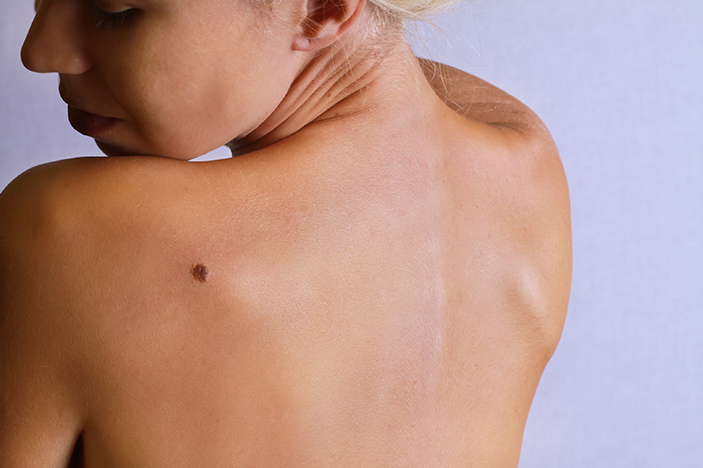
Sometimes a mole is a mole. Other times, it’s cancerous. How can you tell the difference?
Moles are common, even in children. Some darken, others remain light in color. Almost every adult has a mole, and some have as many as 40 on their skin. But moles can also be indicators of melanoma, a form of skin cancer.
David Peng, MD, MPH, a dermatologist at Keck Medicine of USC and chair and professor of clinical dermatology at the Keck School of Medicine of USC, recommends seeing a dermatologist if you have any concerns about a mole.
“We are trained to identify moles that may be indications of skin cancer,” Peng details, in an interview with media site ATTN.
How do you know if your mole is okay? Peng suggests following the Skin Cancer Foundation’s ABCDE method for detecting warning signs of melanoma:
A – Asymmetry
Is your mole round, or is it oddly shaped? An asymmetrical mole is a clear warning sign for melanoma.
B – Border
Moles that are uneven and irregular in shape or have a faint edge or border should be checked out.
C – Color
Moles that are multicolored, red, white or blueish-black can signal melanoma. Most benign moles are one color.
D – Diameter
Worrisome moles can start small but tend to grow larger than the diameter of a pencil eraser.
E – Evolving
Does your mole change in size, color, or shape over time? Does it bleed, itch, or crust over? These are indicators that it could be melanoma.
According to Peng, people who are fair-skinned, burn easily or have a large number of moles are at higher risk for the disease. Even so, he also highlights that “a mole can meet all five of the ABCDE criteria and not be dangerous.”
If your mole is cancerous, the good news is early intervention can eliminate the cancer or prevent it from spreading.
“When caught in the early stages, melanoma very rarely goes outside of the skin and is highly curable,” Peng says. “Your dermatologist or dermatologic surgeon will be able to surgically remove the cancer using local anesthesia.”
Topics
